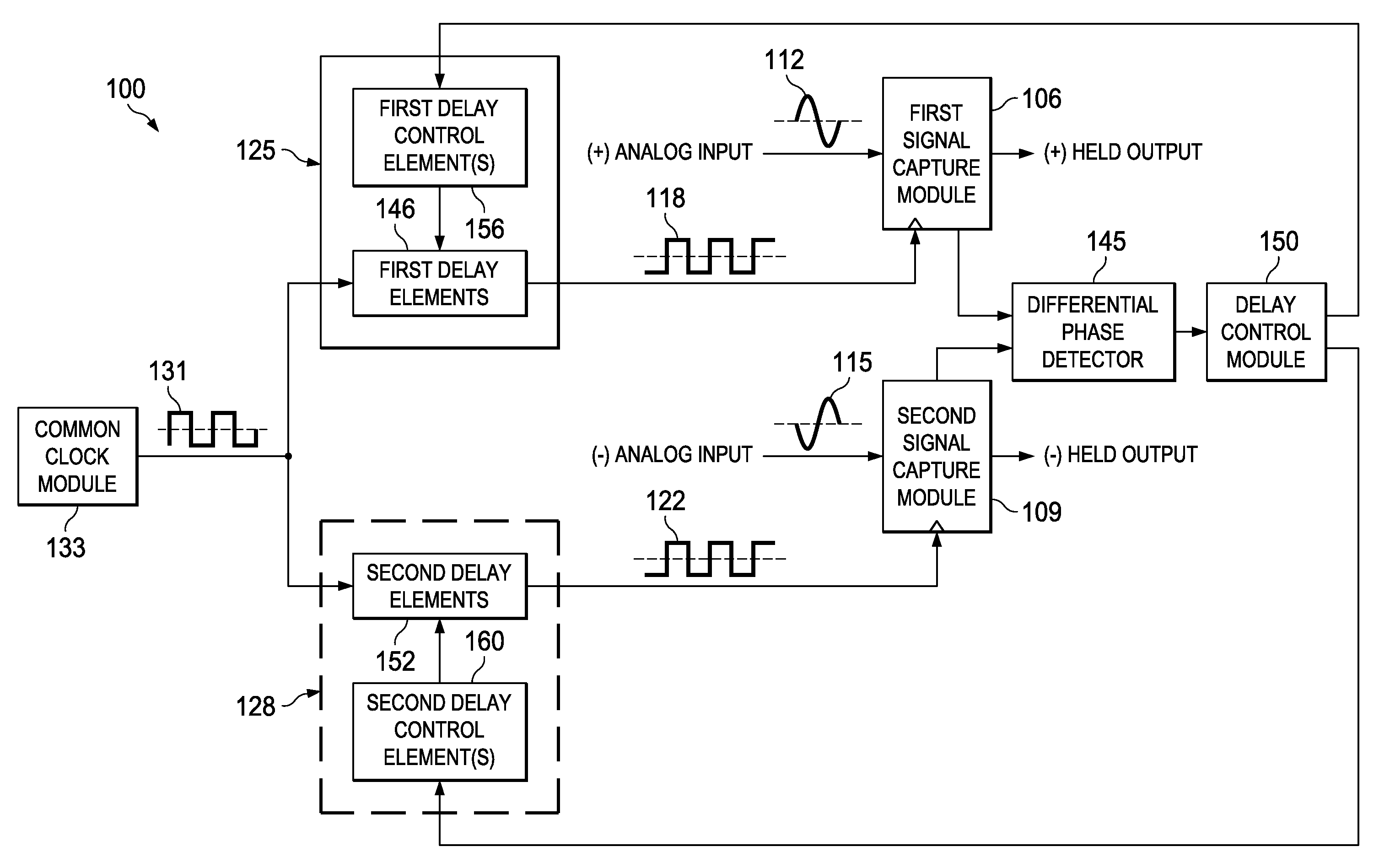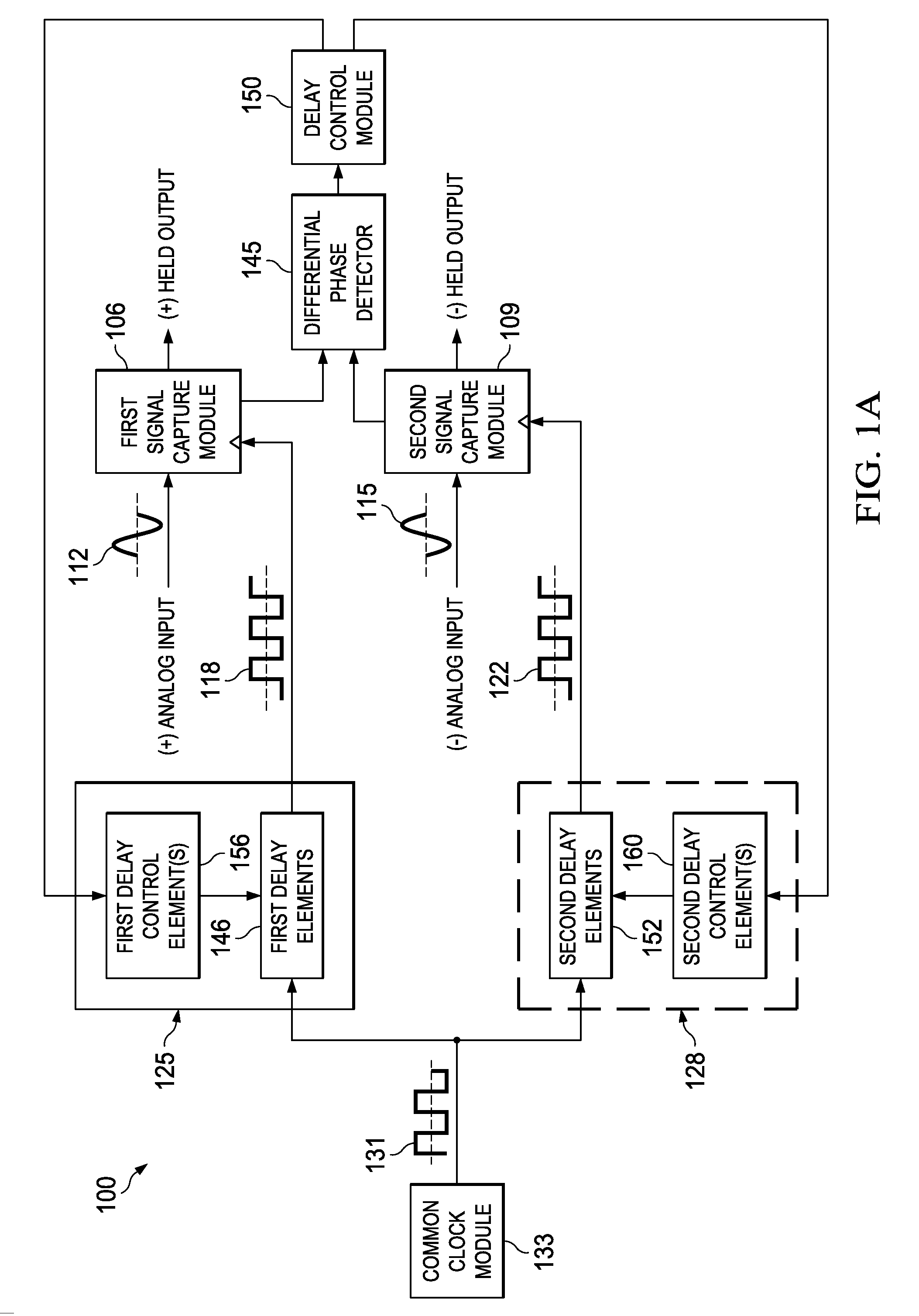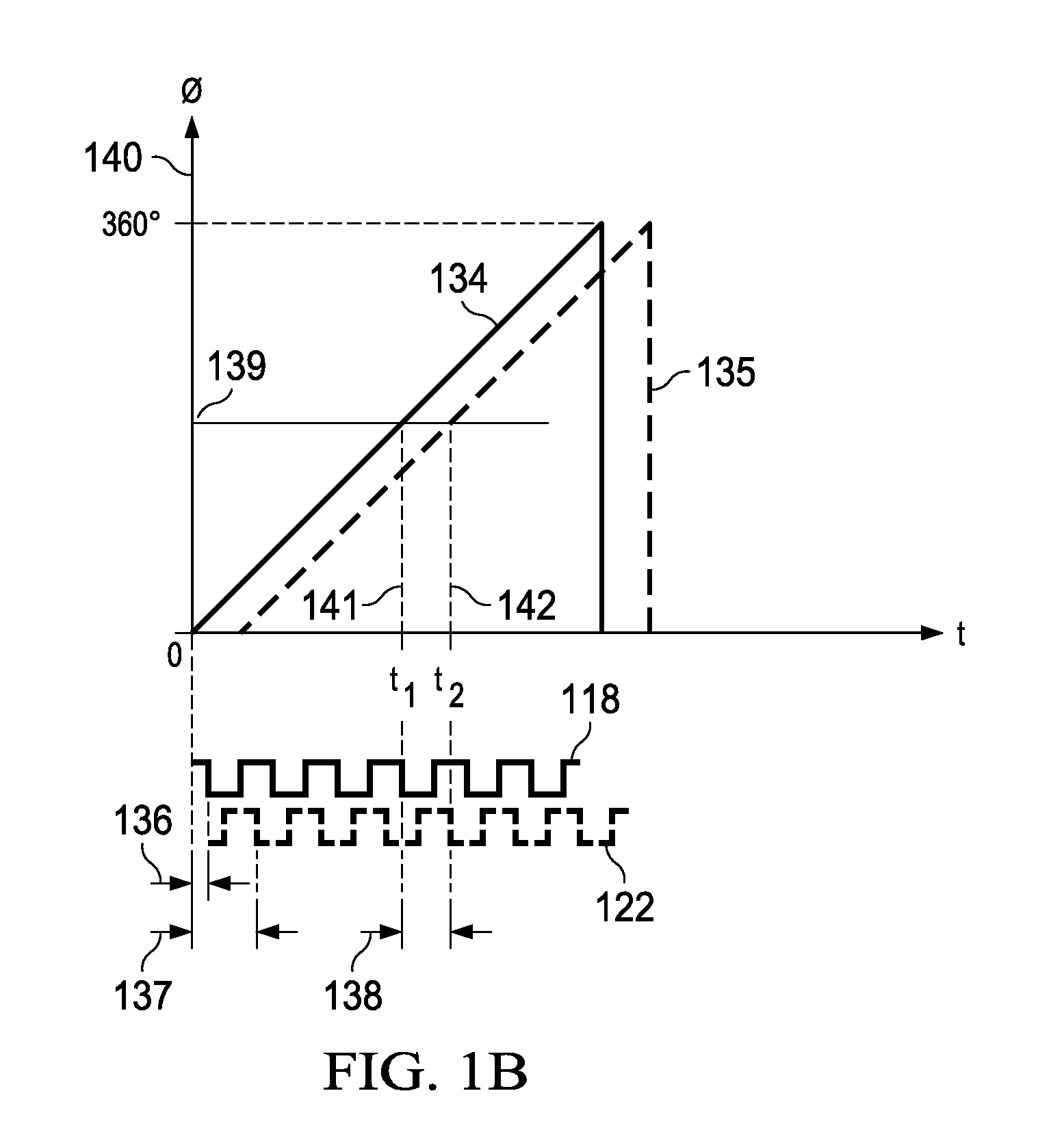Timing skew error correction apparatus and methods
a technology of analog-to-digital converter and time skew error correction, which is applied in the direction of pulse automatic control, electric analogue stores, instruments, etc., can solve the problems of imperfect common-mode rejection (cmr), affecting the integrity of the held signal, and difficulty in perfectly matching the input impedance of the two t/h circuit inputs
- Summary
- Abstract
- Description
- Claims
- Application Information
AI Technical Summary
Benefits of technology
Problems solved by technology
Method used
Image
Examples
Embodiment Construction
[0016]FIG. 1A is a block diagram of a dual-clocked analog signal sampling circuit 100 according to various example embodiments of the current invention. The sampling circuit 100 includes first and second signal capture modules 106 and 109. In some embodiments, the first and second signal capture modules 106 and 109 comprise track-and-hold circuits, sample-and-hold circuits, or both. Although example embodiments may be described in the context of track-and-hold circuits associated with ADC architectures, contemplated embodiments may apply to other types of circuits and applications.
[0017]The first and second signal capture modules 106 and 109 operate to sample a first phase 112 and a second phase 115, respectively, of an analog input signal. The first and second phases 112 and 115 may be inverse phases (e.g., differential phases). The first phase 112 is sampled by capturing the magnitude of the first phase 112 at the first signal capture module 106 upon receipt of a clock transition ...
PUM
 Login to View More
Login to View More Abstract
Description
Claims
Application Information
 Login to View More
Login to View More - R&D
- Intellectual Property
- Life Sciences
- Materials
- Tech Scout
- Unparalleled Data Quality
- Higher Quality Content
- 60% Fewer Hallucinations
Browse by: Latest US Patents, China's latest patents, Technical Efficacy Thesaurus, Application Domain, Technology Topic, Popular Technical Reports.
© 2025 PatSnap. All rights reserved.Legal|Privacy policy|Modern Slavery Act Transparency Statement|Sitemap|About US| Contact US: help@patsnap.com



